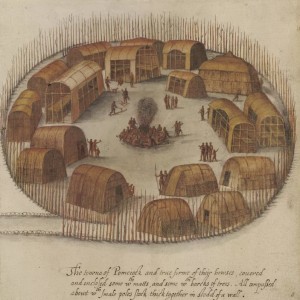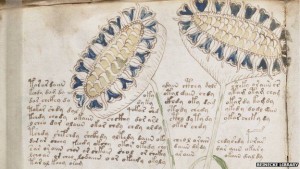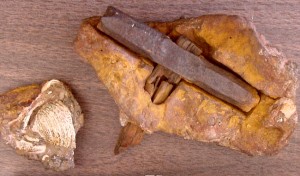The Missing American Colony
 Let me take you back to the late 16th century. Colonization of the New World is in full swing, with the British efforts being led by Sir Walter Raleigh, who had been appointed by Queen Elizabeth I specifically for this job. A lot of the mainland was settled by Native Americans (but not for long, don’t you worry – the rest of the settlers would make that problem go away soon enough), so Raleigh decided to settle on the island of Roanoke, just off the coast of modern day North Carolina. The colony proved to be an immense success, with the colonists turning out to be self-sufficient enough to manage it and live off the land. In 1587, a little girl named Virginia Dare would become the very first child to ever be born in the American Colonies, fated to live out the rest of her days on the island, working the fields and having the simple life of a 16th century colonist, just like her parents.
Let me take you back to the late 16th century. Colonization of the New World is in full swing, with the British efforts being led by Sir Walter Raleigh, who had been appointed by Queen Elizabeth I specifically for this job. A lot of the mainland was settled by Native Americans (but not for long, don’t you worry – the rest of the settlers would make that problem go away soon enough), so Raleigh decided to settle on the island of Roanoke, just off the coast of modern day North Carolina. The colony proved to be an immense success, with the colonists turning out to be self-sufficient enough to manage it and live off the land. In 1587, a little girl named Virginia Dare would become the very first child to ever be born in the American Colonies, fated to live out the rest of her days on the island, working the fields and having the simple life of a 16th century colonist, just like her parents.
Except that’s not what fate had in store for her. Shortly after the girl’s birth, her grandfather John White, appointed by Sir Raleigh as the governor of Virginia, left with a small crew back to England in order to gain more supplies for Roanoke. His journey ended up taking three years (which really makes those seven-hour long oceanic flights feel like a breeze), and in 1590, White finally returned to the colony… Only to find it completely deserted. Not a single person was there. Nothing of value was left. His family, including his little granddaughter, was gone without a trace. The only clue left was the word “Croatoan”, which had been carved into one of the trees – presumably by a fleeing colonist. There were no signs of violence, no puddles of blood, no bullet holes or tomahawks in the trees. The colony had been untouched, safe for the missing colonists and their belongings.
So the obvious question is what happened to Virginia Dare, her family and her fellow colonists? Why did they leave their home, and if they did, where did they go? Now, as you should know by now, I’m a man of reason and I don’t like to entertain impossibilities, so for the time being, let’s eliminate aliens, demons, Native American graveyards and anything else in this realm, okay? There are several theories that are a bit more grounded in nature, based on the evidence at hand. The likeliest explanation is that the colony found itself no longer able to sustain itself. It took three years to bring home the much-needed supplies, and it’s entirely possible that the colonists simply didn’t last that long. They may have left the island in search for a home with more resources, and on their way might have drowned, or been killed by Spanish conquistadors. The Dare Stones – a series of inscribed stones discovered in the 1930s – were apparently used as a gravestones for Virginia Dare, her father and most of the colonists, claiming that they were murdered by savages. However, it’s very likely that the stones were faked, given the fact that they were discovered quite far from Roanoke.
The likeliest theory received some support only recently, when two different teams discovered the remains of pottery in North Carolina. What’s interesting about this discovery is that it was made in a style called Border Ware, shared by a lot of the pottery and cutlery found in Roanoke. Which means that it’s very likely the colonists did, in fact, go inland, and eventually mixed in with some of the local native tribes. It seems like a stretch, but considering the fact that no bodies were ever discovered by future colonists, it seems unlikely that the inhabitants of Roanoke met their doom prematurely. The hint left on the tree – “Croatoan” – also supports this, as the Croatoan tribe lived on an island not far from Roanoke. It’s very likely that, rather than face starvation, the colonists (at least part of them) went there and mixed in with the local population. Unfortunately, at this point more concrete proof than that will likely be impossible to find. No matter what happened, though, it’s clear that the Roanoke Colony, alongside its youngest resident Virginia Dare, has been able to capture the minds and imaginations of people who lived hundreds of years after them – something that likely wouldn’t have happened had they remained untouched.
Read More → What would you do if you happened upon a treasure worth over $63 million? Would you buy a house? Would you start a business? Would you go on a vacation? Would you become the greatest user that
What would you do if you happened upon a treasure worth over $63 million? Would you buy a house? Would you start a business? Would you go on a vacation? Would you become the greatest user that  There are numerous unexplainable mysteries in the world. What’s the explanation behind the Fermi Paradox? Are there other universes besides our own? Why is it that
There are numerous unexplainable mysteries in the world. What’s the explanation behind the Fermi Paradox? Are there other universes besides our own? Why is it that  What if one day we discovered an iPod in a previously unopened chamber of the Pyramid of Giza? Or a Snickers wrapper buried deep beneath Stonehenge? Will that discovery change the course of human history? Are we going to assume that it’s just a hoax and move on, or that we’re missing something and the discovery isn’t as important as we may think it is? What would our reaction to such a phenomenon be? Well, that’s actually not a hypothetical scenario, as we’ve already discovered an item so misplaced in time that there seems to be no logical explanation of its existence.
What if one day we discovered an iPod in a previously unopened chamber of the Pyramid of Giza? Or a Snickers wrapper buried deep beneath Stonehenge? Will that discovery change the course of human history? Are we going to assume that it’s just a hoax and move on, or that we’re missing something and the discovery isn’t as important as we may think it is? What would our reaction to such a phenomenon be? Well, that’s actually not a hypothetical scenario, as we’ve already discovered an item so misplaced in time that there seems to be no logical explanation of its existence. Reel King, by Novomatic is the perfect example of a classic slot machine that you could find in the corner pub back in the day. It is a 5-reel, 20-line masterpiece that only goes to show that sometimes less is more and this is why you shouldn’t expect any bonus rounds or spectacular graphics. On the other hand, for those who would rather spin to win rather than play through numerous animations and bonus rounds, this slot is truly a sight for sore eyes. With the classic cherries and plumbs symbols and your all too familiar cards from 10 to king, Reel King is just the thing for me. Simple and clean, with a pretty juicy 777 jackpot, this slot has really deserved its name of king. You can find more information at
Reel King, by Novomatic is the perfect example of a classic slot machine that you could find in the corner pub back in the day. It is a 5-reel, 20-line masterpiece that only goes to show that sometimes less is more and this is why you shouldn’t expect any bonus rounds or spectacular graphics. On the other hand, for those who would rather spin to win rather than play through numerous animations and bonus rounds, this slot is truly a sight for sore eyes. With the classic cherries and plumbs symbols and your all too familiar cards from 10 to king, Reel King is just the thing for me. Simple and clean, with a pretty juicy 777 jackpot, this slot has really deserved its name of king. You can find more information at  In the early 1960s, Betty and Barney Hill’s supposed abduction and subsequent experimentation by aliens sparked a mass interest in aliens across the United States, to put it mildly. Suddenly everyone was seeing flying saucers, everyone was being abducted, everyone was talking to aliens. Blurry black and white images of odd shapes in the night sky, or of weird creatures half-hidden behind a tree and other dubious pieces of “proof” were widespread. Some people wanted to ride the bandwagon to get their 15 minutes of fame, others wanted to capitalize on the phenomenon in order to bring some tourism revenue, while others still genuinely fell to the psychosis of the time and believed they had been visited. As such, the overwhelming majority of reports from the 60s and 70s should be, and have been, rightfully dismissed as untrue, which is why it is so crucial that we examine the reports dating before the word UFO was a household name. And by far the most famous of these cases is the 1955 Hopkinsville Goblin.
In the early 1960s, Betty and Barney Hill’s supposed abduction and subsequent experimentation by aliens sparked a mass interest in aliens across the United States, to put it mildly. Suddenly everyone was seeing flying saucers, everyone was being abducted, everyone was talking to aliens. Blurry black and white images of odd shapes in the night sky, or of weird creatures half-hidden behind a tree and other dubious pieces of “proof” were widespread. Some people wanted to ride the bandwagon to get their 15 minutes of fame, others wanted to capitalize on the phenomenon in order to bring some tourism revenue, while others still genuinely fell to the psychosis of the time and believed they had been visited. As such, the overwhelming majority of reports from the 60s and 70s should be, and have been, rightfully dismissed as untrue, which is why it is so crucial that we examine the reports dating before the word UFO was a household name. And by far the most famous of these cases is the 1955 Hopkinsville Goblin. In the 1990s, the citizens of the small town of Taos, New Mexico, began complaining of a sound which was driving them crazy. Not everyone complained – the reports were made by a small minority of citizens, but those who made them were completely unrelated and had never met before. The University of New Mexico investigated these claims, but found no substantial evidence that a noise even existed – nothing was picked up by the tools and instruments used in an attempt to record the source of the sound, and none of the people who investigated even heard it with their own ears. While originally just written off as an odd form of mass psychosis, soon it was discovered that British newspapers had been reporting a very similar phenomenon since the 70s, and once the story of Taos reached global attention, numerous people across the globe reported hearing the noise that would later be dubbed “The Hum”.
In the 1990s, the citizens of the small town of Taos, New Mexico, began complaining of a sound which was driving them crazy. Not everyone complained – the reports were made by a small minority of citizens, but those who made them were completely unrelated and had never met before. The University of New Mexico investigated these claims, but found no substantial evidence that a noise even existed – nothing was picked up by the tools and instruments used in an attempt to record the source of the sound, and none of the people who investigated even heard it with their own ears. While originally just written off as an odd form of mass psychosis, soon it was discovered that British newspapers had been reporting a very similar phenomenon since the 70s, and once the story of Taos reached global attention, numerous people across the globe reported hearing the noise that would later be dubbed “The Hum”. UFO sightings. Signs of species unknown to science.
UFO sightings. Signs of species unknown to science.